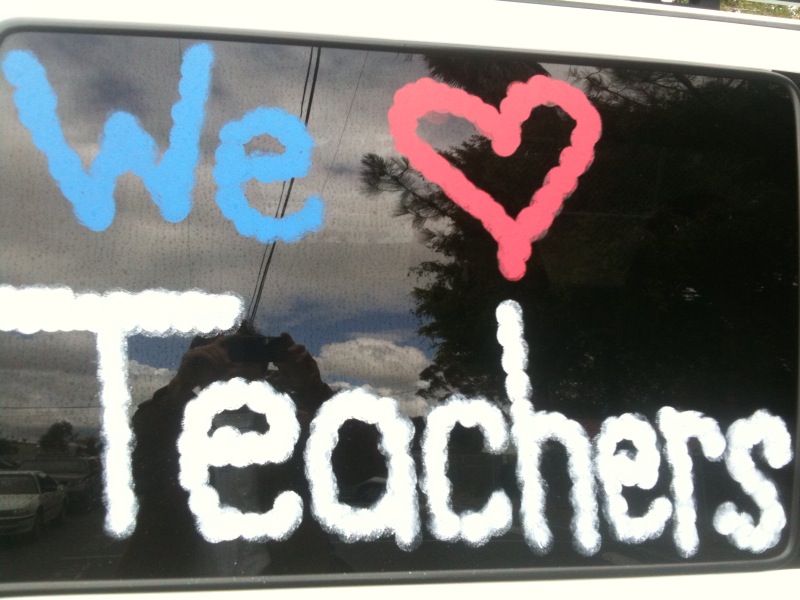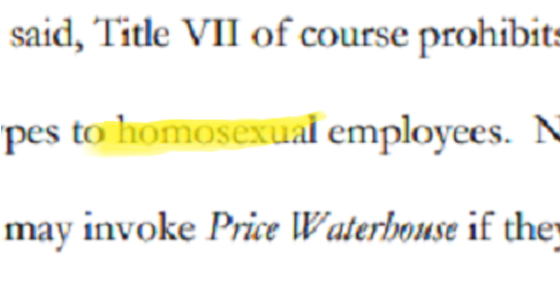Abortion rights, women of color, and LGBTQIA+ people are under attack. Pledge to join us in fighting for gender justice.
We Are the Ones We’ve Been Waiting For: West Virginia’s Women Know What They Are Worth


The West Virginia teachers strike ended last week after nine gripping days of marches and rallies and demands, of public sector workers who rebuffed their union leadership and refused to go back to work until they got a raise not just for themselves but for workers statewide, and with a real and significant win: a five percent pay raise for all state employees. At the National Women’s Law Center, we know it is no accident that the most significant strike in decades was led by a workforce of women who have long been on the frontlines, battling the harm that years of austere budgets have done to their classrooms, their students and their own families. While no one has a magic 8-ball to predict when strikes – much less wildcat strikes – will happen, when you look at the combination of factors that led to the nine-day strike, none of us should have been surprised. Nationally, this is a moment for action.
As an organization dedicated to advancing equality for women and girls in the workplace, in education, in income security and in health care, this strike cuts across all of our issues. We see and we know that in all these areas, this is a moment when institutions are failing working people and especially working women. But so too, we see it is a moment in which women in particular are rising with a collective voice to fight back.
West Virginia Teachers Show Us How to Fight, Even Without Institutions on Our Side
Turns out, West Virginia public sector workers don’t need the Supreme Court or even the state to support public sector unions before striking. On February 26th,the Supreme Court heard oral argument in a case, Janus v. AFSCME, that could significantly weaken public sector unions. Given the hostile questioning by the court, it is widely anticipated that the union in this case will lose, and individuals covered by union contracts in the public sector will no longer be required to pay for the benefits that they receive. Ironically, this change would force restrictions on the dues collection of public sector unions, similar in many ways to the restrictions already in place in West Virginia. Unlike collective bargaining in the private sector, which is governed federally by the National Labor Relations Act, public sector bargaining is regulated on a state by state basis. And a handful of states have no statutory provisions governing the rights of public sector workers to join unions at all, or to protect the right to collectively bargain or strike. West Virginia is one of those states. Thus, West Virginia unions don’t bargain contracts, but lobby the state for raises to a pay scale set by the legislature, and are only able to collect dues from members, even though their activities benefit all teachers.
In this climate, in which decades of corporate-backed efforts to undermine unions have reached even institutions like the Supreme Court, it is a thrilling prospect that even in a state where public sector workers have no state-sanctioned rights to collectively bargain or collect fair share fees, nearly 20,000 teachers across 55 counties were able to mobilize and stick together for nine days – even staying out on strike in defiance of their union leaders who were ready to accept a far worse and far more uncertain bargain from the state. We remain hopeful that if the Janus decision sells out public sector workers in other states, the one silver lining may be that working people in the public sector follow the example of their colleagues in West Virginia, and strike for what they are worth.
Women’s Voices Are Louder Than Ever: We Refuse to Be Undervalued and Underpaid
From the Women’s March to the #metoo movement, this is a moment of intense women’s activism. And no wonder; women and teachers across the country, but especially in West Virginia, are overwhelmingly women who are undervalued and underpaid.
West Virginia’s teachers are almost 75% women, mostly between the ages of 30 and 49. In West Virginia, 18% of women live in poverty and more than 6 in 10 minimum wage workers are women. A staggering 47% of female headed families with children under 18 live in poverty.
Before this week, teacher salaries in West Virginia ranked 48th among the nation. The average teacher salary was $45,622, 22% below the national average. Nationally, we know that traditional “women’s work” like teaching and child care is undervalued and underpaid. And low salaries in disproportionately female workforces are a major driver of the gender wage gap—which is especially wide in West Virginia, putting the state’s rank at 49th in the country out of 51 states and the District of Columbia. Overall, women working full time in West Virginia are paid just 72 cents for every dollar paid to their male counterparts, and women of color fare even worse: Black women make just 61 cents, and Latinas just 58 cents, for every dollar made by a white-non Hispanic man.
For years, rather than investing in policies and programs that would narrow these gaps and help women support their families, policy makers in West Virginia have pushed corporate tax cuts with familiar but baseless claims that they will boost the economy. And (no surprise) those tax cuts ended up starving the state of the revenue it needed to, for example, pay its teachers fairly or curb their health insurance premium costs. Through years of budget tightening, it became abundantly clear that the neither the governor (who reportedly called West Virginia’s teachers “dumb bunnies” in the days before the strike) nor the legislature (which continues to strip women of their rights to reproductive health care) intended to prioritize the needs of women and their families.
Women know that they are worth more. So West Virginia’s teachers did what women always do – albeit on a much larger scale. They made noise, stuck it out, and won. And they did it in a uniquely caring way, including pooling their own money to make sure their students who relied on school lunch did not go hungry while schools were closed. When women rise, the whole community rises too.
What comes next?
In states from Oklahoma to Kentucky, other public employees are now gearing up for strikes, statewide walkouts and public protest. And according to labor historian Joeseph McCartin, “public sector strikes tend to come in waves…teacher strikes tend to breed more teacher strikes.” What we could only dream about before – general statewide strikes – have now become more than just a glimmer in the eyes of millions of working people who are faced with similar hardship as those in West Virginia.
These public sector workers – largely women – understood what this moment in history calls for: bold and unapologetic action to demand that the institutions we depend on do not fail us, or future generations. And we are all better off for it, and for them.






